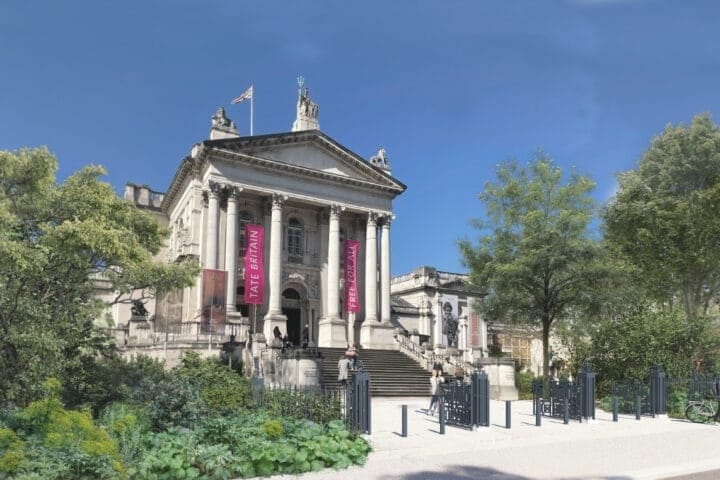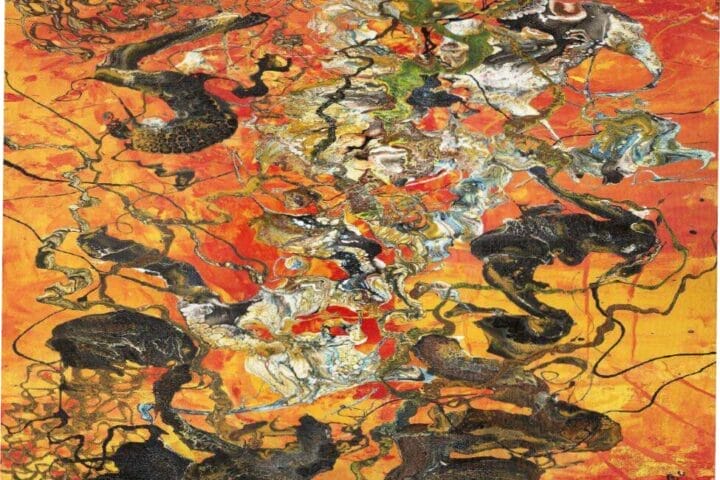The National Gallery will display six of Andrea Mantegna’s monumental paintings The Triumphs of Caesar, loaned from the Royal Collection by His Majesty The King, from 18 September 2023.
The Renaissance artist’s greatest masterpiece will be on show at the Gallery for a period of around two years, while their home, the Mantegna Gallery at Hampton Court Palace, is closed for maintenance work.
This will be the longest period that any of these works have been shown away from their usual home at Hampton Court Palace.
Considered to be among the finest achievements in Italian Renaissance art, a total of nine canvasses were painted by Andrea Mantegna (about 1431‒1506) for the Gonzaga family in Mantua, between about 1485 and 1506. Together, the nine pictures form one of the largest and most ambitious groups of Italian Renaissance paintings outside Italy. They are the most complete pictorial representation of a Roman triumph perhaps ever attempted.
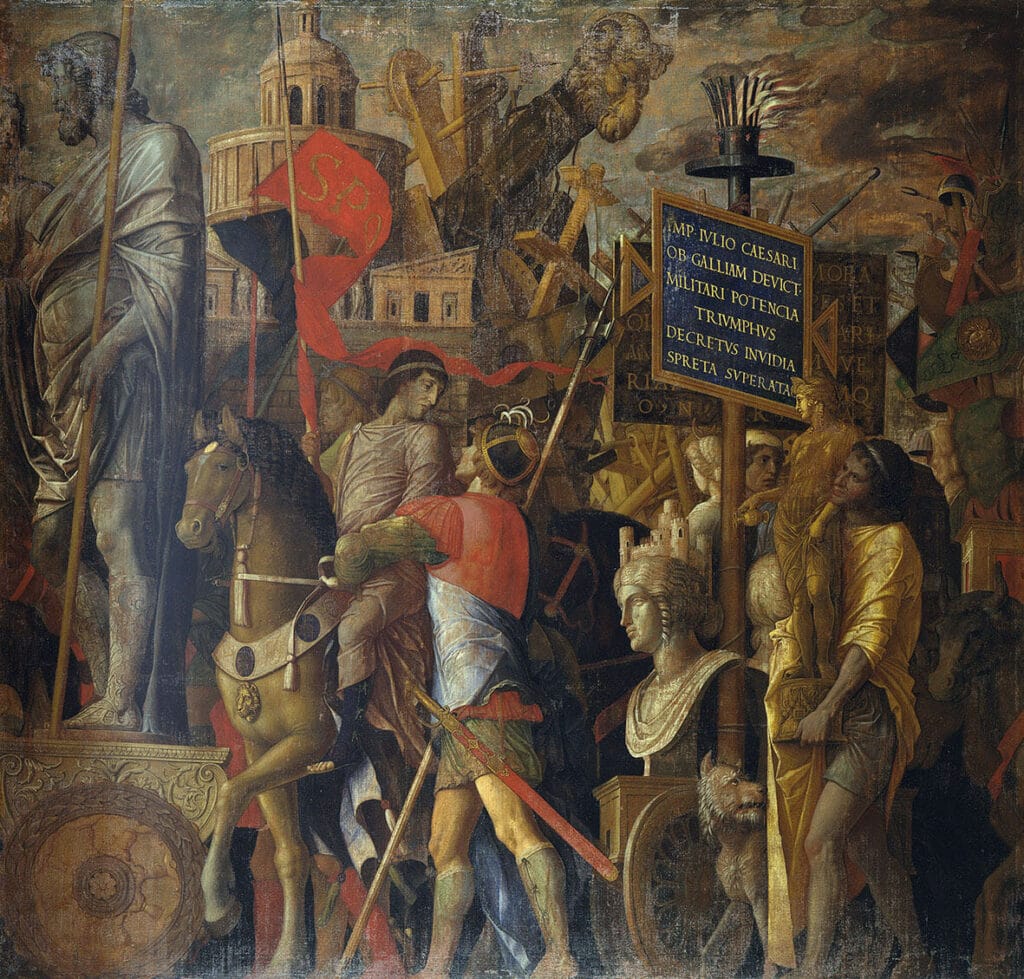
Mantegna’s Triumphs were acquired by King Charles I (1600‒1649) in 1629 when he purchased many treasures from the Gonzaga collection. Soon after their arrival in England in 1630, they were brought to Hampton Court Palace which has remained their home for nearly 400 years.
The paintings have been housed in the Mantegna Gallery in Hampton Court Palace’s Lower Orangery since the 1920s and have left the Palace only occasionally since the early 17th century. In 2022, Historic Royal Palaces closed the Mantegna Gallery for planned maintenance works, which are due for completion in 2026. During the period of closure, six of the paintings will go on display at the National Gallery, while two will remain at Hampton Court and have been on display in the Queen’s Apartments since April 2023.
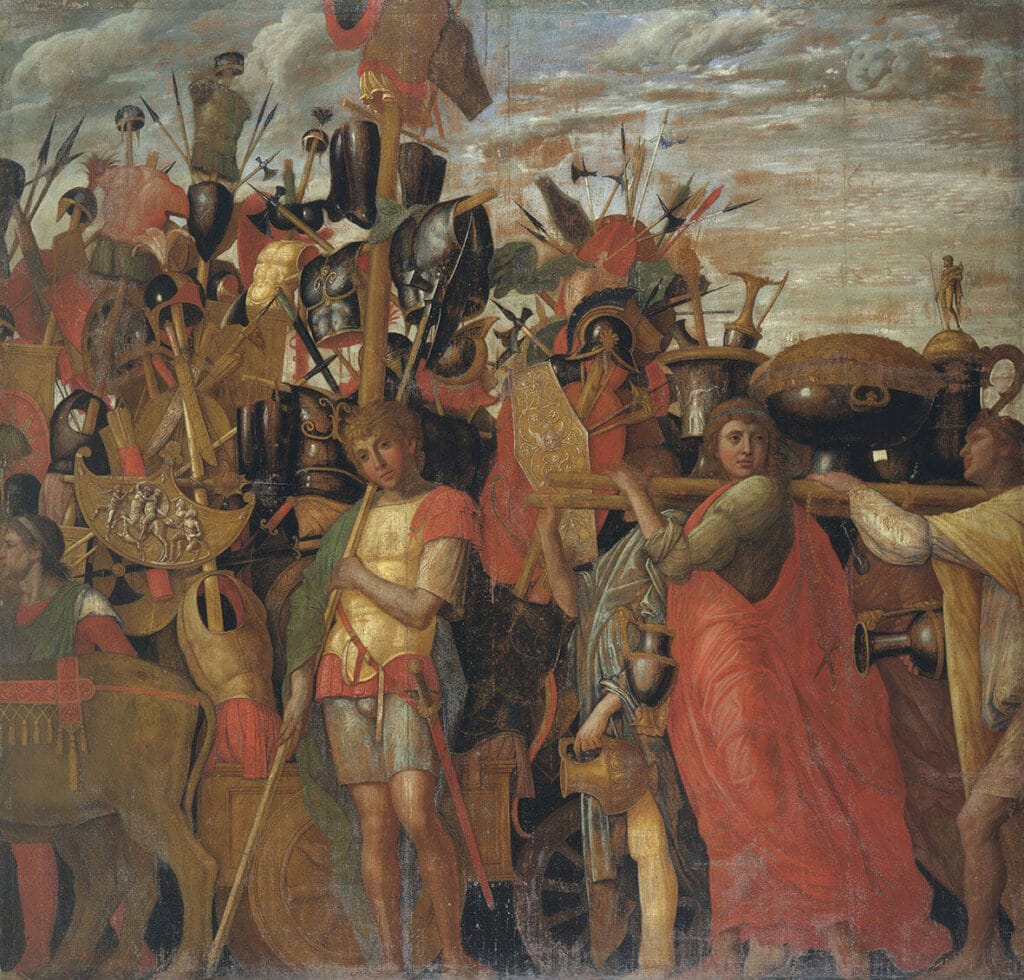
This display of The Triumphs of Caesar at the National Gallery is a unique opportunity for visitors to see this impressive series of six of the finest works by Mantegna in Room 14, where Peter Paul Rubens’s A Roman Triumph (NG278, about 1630) will also be hung to show a later artistic response to the Triumphs, from around the time they arrived in England.
The Triumphs will be displayed in frames specially designed and made by the National Gallery Framing Department. Other works by Mantegna from the National Gallery’s collection: The Introduction of the Cult of Cybele at Rome (NG 902, 1505‒6), Samson and Delilah (NG1145, about 1500), Two Exemplary Women of Antiquity (NG1125.1 and NG1125.2, about 1495‒1506) and The Virgin and Child with the Magdalen and Saint John the Baptist (NG274, about 1490‒1505) will be displayed in close proximity in Room 5 while Mantegna’s The Agony in the Garden (NG1417, about 1455‒6) is displayed in Room 29.
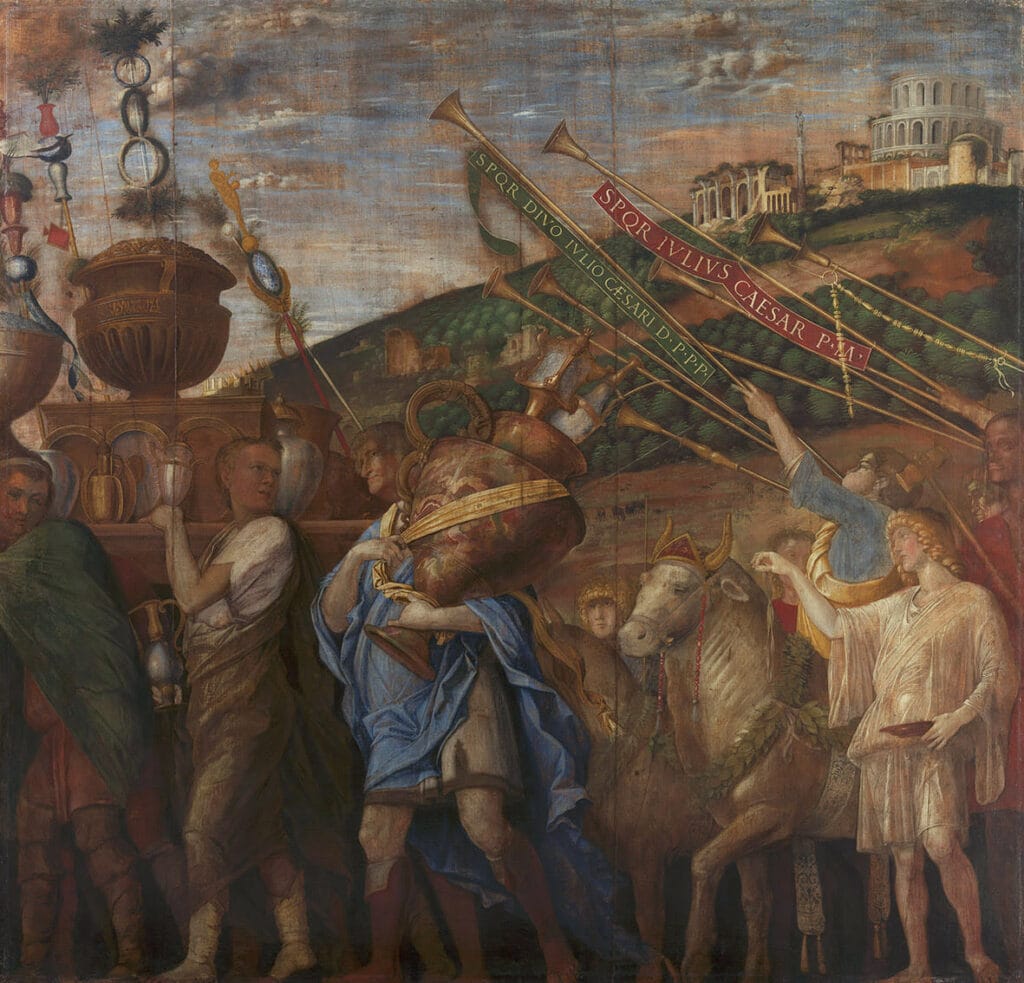
Andrea Mantegna was one of the most celebrated artists of the 15th century. His extraordinary talents were recognised by the Marchese Ludovico Gonzaga of Mantua (1412–1478), who appointed him as his court artist in 1460. His first Mantuan masterpiece, the Camera Picta was painted in an apartment of the Castle of the city: a series of frescoes including various portraits of the Gonzaga family finished around 1474. In 1488 Mantegna was called by Pope Innocent VIII to paint frescoes (now lost) in a chapel Belvedere in the Vatican. Returning to Mantua in 1490, Mantegna concentrated on the nine tempera canvases of The Triumphs of Caesar, which he had probably begun before leaving for Rome. These inventive compositions were probably commissioned by the successors of Marchese Ludovico, Francesco Gonzaga (1466‒1519) and the new Marchesa, the cultured and intelligent Isabella d’Este, for the Palazzo San Sebastiano in Mantua.
The Triumphs show the ancient Roman ruler Julius Caesar (about102‒44 BC) returning from his successful military campaigns. The nine paintings form a sequence depicting a single procession with Julius Caesar borne on a chariot passing in front of a triumphal arch. He is preceded by Roman soldiers, standard-bearers, musicians, and the spoils of war, which include weapons, artworks, gold and silver, prisoners and animals. The procession cannot be connected to a particular campaign, but Mantegna could have consulted a number of writers, such as Suetonius, Plutarch and Appian, all of whom penned descriptions of triumphs, which were available during the 15th century in manuscript or printed forms. He would have also taken inspiration from Roman antiquities, particularly monumental arches and columns.
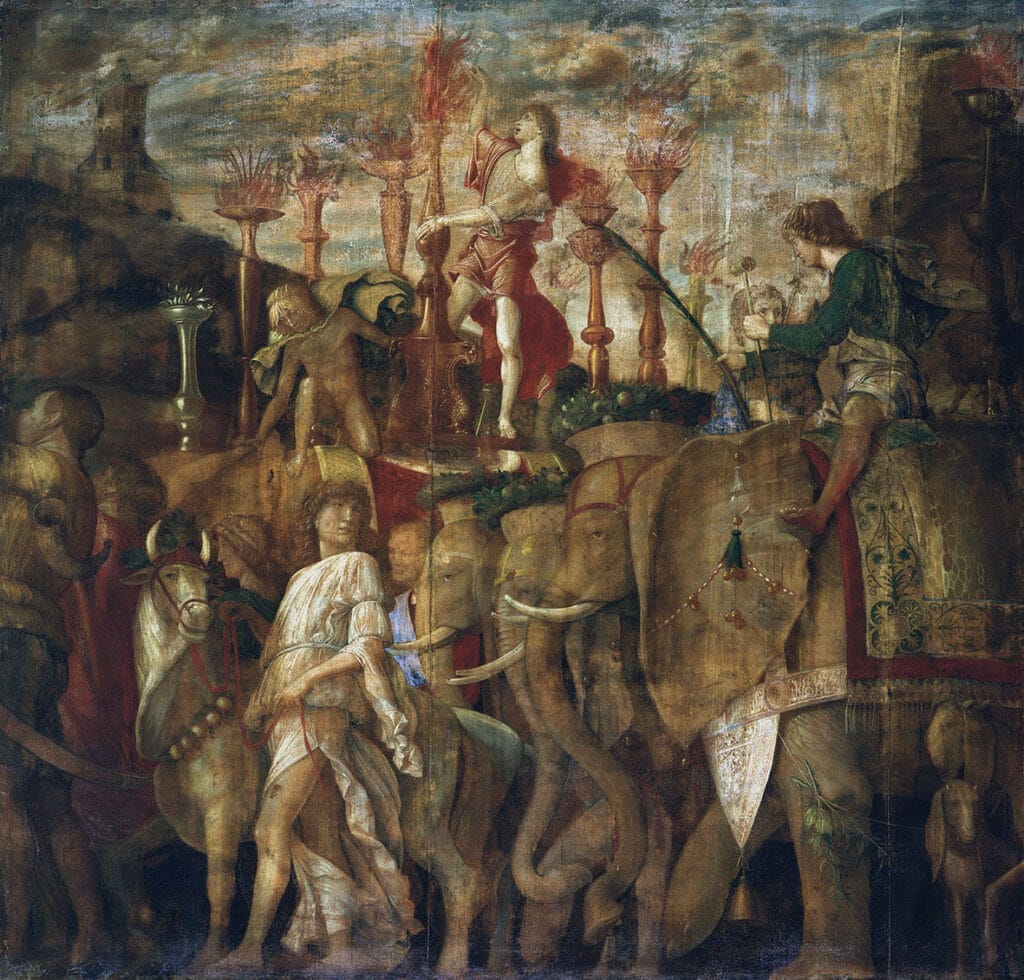
Considered among Mantegna’s finest work, The Triumphs of Caesar display his style and craftmanship superbly. Having studied antique marble sculptures as part of his training, Mantegna heavily relied on the art of classical antiquity for inspiration and as a result the painter exercised precision in outline, privileging figures which are statuesque, athletic, and imposing, conveying energy, dynamism, and power. His draperies are tight and closely folded, being studied (it is believed) from models draped in paper and woven fabrics gummed in place. The use of strong colours for the figures in the foreground contrasting with more muted colours in the background helps create a sense of perspective, optical illusion, movement, and drama.
Laura Llewellyn, Curator of Italian Paintings before 1500 at the National Gallery, says ‘Andrea Mantegna’s Triumphs are a tour de force, epitomising many of his most celebrated achievements: his profound creative response to the art of antiquity, his technical mastery and his pictorial innovation. It is a great privilege to host six of these magnificent works in our galleries, where we are excited to display them in the context of the National Gallery’s own collection, especially alongside our treasured and preeminent holdings of 15th-century Italian painting.’
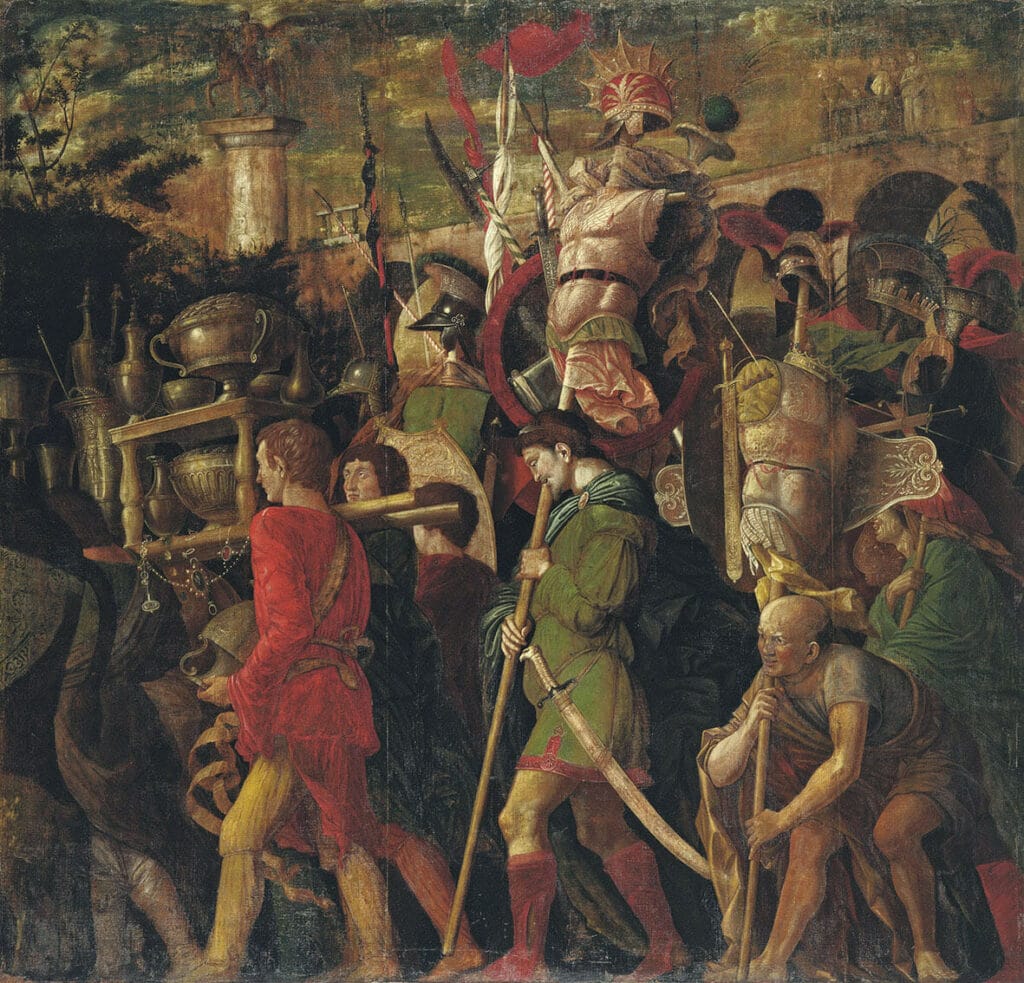
Anna Reynolds, Deputy Surveyor of The King’s Pictures, Royal Collection Trust, says ‘Charles I’s art collection was renowned across Europe, and the monumental Triumphs of Caesar by Mantegna were among his most prized treasures, valued for their dramatic portrayal of success and power, combined with a sophisticated painting technique, rich in observation and detail. We are delighted to have the opportunity to work with the National Gallery to ensure that the Triumphs can be enjoyed by the public in a new setting during this period.’
National Gallery Director, Dr Gabriele Finaldi, says ‘With the display of these supreme masterpieces of Renaissance art, lent by His Majesty the King, the public will be able to see the largest selection anywhere of works by Andrea Mantegna, an artist of astounding skill, invention and pictorial brilliance.’
More information at nationalgallery.org.uk
Andrea Mantegna, about 1431-1506
Mantegna was born near Padua and at the age of 11 became the apprentice of Paduan artist Francesco Squarcione, who taught him Latin and instructed him to study fragments of Roman sculpture. However, at the age of 17, believing his talents were being exploited, the ambitious young artist left Squarcione’s workshop. As the young artist progressed in his work, he came under the influence of Jacopo Bellini, father of the celebrated painters Giovanni Bellini and Gentile Bellini, and met his daughter Nicolosia whom he married in 1453. Mantegna’s early style is represented by The Agony in the Garden.
Mantegna’s first work, now lost, was an altarpiece for the church of Santa Sofia in 1448. The same year he was commissioned with other artists to paint frescoes for the Eremitani Chapel in Padua. He worked in Padua, Verona and Venice before moving to Mantua in 1460, where he spent the rest of his life. The great paintings by Mantegna in the Gallery date from his years in Mantua as court artist to the Gonzaga.
His scholarly interest in the antique drew him into friendship with humanist scholars like Felice Feliciano. In 1464 they dressed up as Romans for a boating excursion on Lake Garda. In The Triumphs of Caesar (c.1485 – 1506) Mantegna indulged his interest in antique art, which can also be seen in the Gallery’s The Introduction of the Cult of Cybele at Rome. He developed a painting technique which enabled him to imitate the look of classical sculpture. Mantegna produced engravings which helped spread his designs and fame beyond Italy. From possibly humble origins Mantegna rose to become a valued retainer of the Gonzaga. He was knighted by 1484, a rare honour for an artist.

